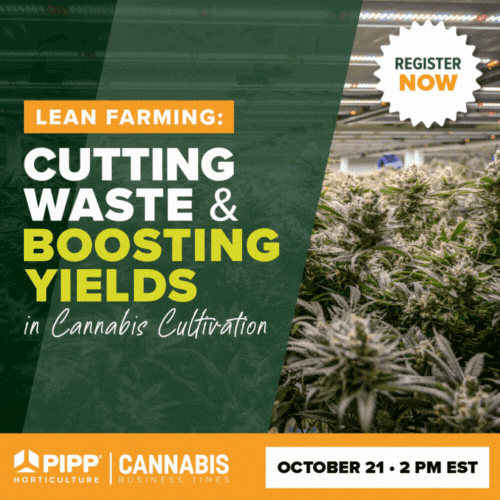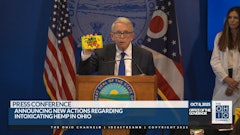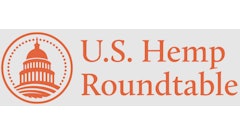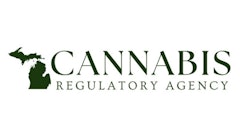Ready or not, cannabis regulators are watching you.
What was once considered a subversive or fringe industry has blossomed into a vast, complex, multifaceted sector all its own over the past decade. And with those changes have come a much-increased regulatory presence.
Proper labeling is paramount these days, while testing for potency, pesticides, microbials and more is commonplace. But here’s the thing: Those cannabis- and hemp-specific mandates, important as they are, are barely the tip of the regulatory iceberg compared to what’s coming down the pike.
Regulations from the likes of the Occupational Safety and Health Administration (OSHA) and the Food and Drug Administration (FDA) are essential for ensuring safety of workers and consumers and further legitimizing the hemp and cannabis industries as a whole. But unless cultivators, processors and dispensaries make some changes now, they’ll be playing catch-up for years to come—many with suboptimal consequences.

As the world’s first cannabis and hemp specialist for a major metropolitan public health authority at Denver’s Department of Public Health and Environment, where I worked for nearly four years, I witnessed countless well-meaning operators (and their investors) get tripped-up by rules and regs that aren’t always black and white. My work as a regulator now informs everything I do in advising my cannabis and hemp clients.
As regulatory agencies at every level are stepping up their presence in these still-new industries, here are a couple of the lessons to help you and your colleagues steer clear of trouble.
A Maturing Industry
In my years spent as a regulator, which included hundreds of investigations of cannabis and hemp businesses of every kind, I saw the industry transform from one in which blatant non-conformances were rampant (think: no-label brownies in unsealed baggies on dispensary shelves) to one with increasingly stringent consumer safety standards. The industry has rapidly grown up, especially in states with well-established regulated markets like Colorado. And those changes come, in large part, as a result of exacting attention to detail and putting in a lot of hard work.
Since I’ve crossed the regulatory fence to work as a business consultant, I’ve worked with many cannabis owners, operators and investors who are passionate about their businesses and who openly embrace regulatory compliance because it instills consumer trust. But let’s face it: Not everyone is an expert on food safety protocols or OSHA codes.
To borrow a common phrase, you don’t know what you don’t know. And in this rapidly maturing and increasingly regulated industry, that can lead to big problems.
Whether you're launching a new facility, have recently acquired an existing business or perhaps received a less-than-stellar health inspection, it's smart to regularly assess your operation from the top down. Inspectors pay close attention to certain things: working hand sinks, personal protective equipment (PPE), documentation, contamination avoidance and worker safety, to name a few.
And because outside perspectives are essential in any highly regulated industry, my first recommendation to operators and investors is always to seek advice from a regulatory expert—and then honestly identify key areas in need of improvement at their facilities.
Once you have taken an honest look at your operation and have a grasp on what needs work, you can make a plan of action and implement necessary changes. Companies that embrace this type of self-assessment and self-improvement almost always sail through regulatory checks with health departments, fire inspectors and the like. Removing the stress of noncompliance allows them to focus on what really matters: growing their business.
As regulated cannabis markets take root across the country and cannabinoids find their way into more and more consumable products—baked goods, tinctures, supplements, confections, body products and more—much of the industry will inevitably find itself subject to the same regulations as mass-market food and cosmetics manufacturers. But unlike those industries, there’s no real precedent for intense regulation in the cannabis industry. Many cannabis operators aren’t familiar with the rigorous mandates that accompany federal regulatory oversight—and the consequences of noncompliance with federal bodies, like FDA or OSHA, are far steeper than any state cannabis-specific penalties.
Think Long-Term Starting Now
There’s a lot on the cannabis policy reform horizon right now. Several states, including New Jersey and Arizona, are voting on legalization for adult use in the upcoming election. And many insiders predict that successful legalization in those states will usher in a period of rapid political change and widespread legalization—likely leading to federal legalization. This would ease numerous burdens currently placed on the industry by the current patchwork of state laws, but it will also open up companies to much stricter federal health and safety regulations.
So, that’s the mindset everyone in the industry should have when they evaluate their compliance levels.
You absolutely do not want to be operating a noncompliant facility when OSHA or the FDA comes knocking. I cannot underscore that enough. And I can say with certainty that it’s the proactive organizations that will find success in the federally legal landscape, while those that drag their feet implementing strict, compliance-minded standard operating procedures (SOPs) will most certainly drop like flies.
To that end, it’s a great idea to earn any certifications your organization has been considering and to upgrade your facilities and processes now. It can make a huge difference and help your organization get ahead of the regulatory curve—and the competition.
For example, I recently worked with a processing facility as it earned a Current Good Manufacturing Practices (cGMP) certification. This certification ensures that facilities and processes to create foods or drugs are safe and takes into account safety at every stage of the process—from handling to packaging. Together, we established strong quality management systems, hygiene protocols and safe handling practices. The FDA considers cGMP the baseline in consumer safety practices—and it’s an essential certification for any cannabis and hemp manufacturing, cultivation or processing organization looking to grow in a nationally legalized landscape.
Another client of mine worked with raw cannabis oil. Everything seemed to be in alignment: They had proper SOPs in place, good hygiene practices and adequate fire safety measures across the facility. But the temperature at which they were storing their oil was problematic and could have led to the proliferation of microbes that could lead to toxins in their end product—a serious operational issue. They were intent on doing things by the book, but until a trained regulatory expert evaluated their facility, they hadn’t considered the headaches that something like improper refrigeration temperatures might cause when it came to their local health department.
Good Intentions Can Have Bad Consequences
Even facilities that scrupulously document their processes with the very best of intentions for their workers may be in violation of regulations without even realizing it.
Here’s an example: Say the general manager of a processing facility offers workers masks to protect them against dust in the manufacturing process. Great, right? Sure—but not from a regulatory standpoint.
In order to be compliant with OSHA, before even putting masks on (including N95s and respirators), workers first need to fill out forms stating they’re healthy enough to even wear them. When OSHA comes around for an inspection and discovers that workers never completed these forms, the fine can be up to $25,000 per worker—for what would have taken someone with experience in the regulatory space about five minutes to flag.
Success in this industry, from a regulatory standpoint, is truly dependent on details. When a regulatory agent isn’t knocking on your door, it’s easy to put tasks, like creating SOPs or making sure you have proper fixtures, on the backburner. But there’s no reason to risk your business on a bad evaluation—and from what I’ve seen, about 90% of facilities have at least one practice, SOP or safety protocol that could put them in jeopardy.
Don’t wait for the FDA to tell you that cleaning with isopropyl is not a sanitization step or for OSHA to penalize you for not having a Hazard Communication Plan. Do the work now, and reap the benefits for years to come. Because the regulators are circling—whether you’re ready for them or not.
Kim Stuck is the founder and CEO of Allay Consulting, a compliance strategy and services provider serving the hemp and cannabis industries nationwide. During her tenure as a cannabis and hemp specialist with the City of Denver, Stuck worked as an investigator covering cultivation, manufacturing and retail.


























